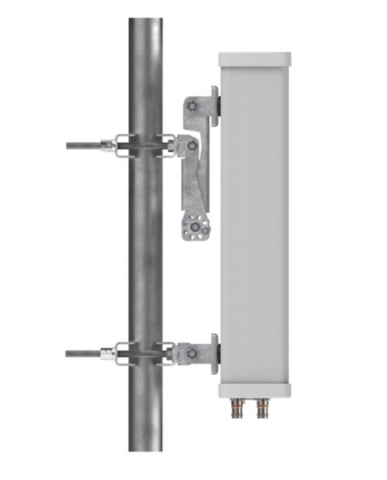CommScope Accelerates 5G Rollouts with New Antenna Solutions
CommScope has unveiled new antenna solutions to expedite 5G rollouts, enhancing wireless operators' network-building processes. Key offerings include:
- C-Band Antennas: Support for multiple upgrade paths, enabling easy addition of C-band functionalities.
- CBRS Antennas: Optimized for sub-6 GHz bands with twin-beam technology, enhancing capacity and reducing costs.
- 360° Wind Load Reduction Design: Improves RF performance while minimizing wind-related costs.
- Launch of C-Band Antennas with multiple upgrade configurations to facilitate network upgrades.
- CBRS Antennas designed to optimize capacity and reduce deployment costs.
- Innovative wind load design across antenna lineup enhancing performance and cost-efficiency.
- None.
To help accelerate 5G rollouts, CommScope announced new antenna solutions making it simpler and faster for wireless operators to build their networks. These include:

CommScope 10-port small cell antenna (Photo: Business Wire)
-
C-Band Antennas – These antennas are designed to support three primary upgrade paths: a standalone passive or active C-band antenna paradigm; a multi-band passive antenna supporting low band, mid band and C-band within a single housing; and a modular antenna configuration including mid band, full length low band arrays and a field-replaceable module that supports C-band via a 64T64R active antenna unit (AAU) or a 8T8R passive antenna. The last two upgrade paths allow operators to replace an existing multi-band antenna with one that adds C-band functionality – without any change in the size of the antenna, thus avoiding costly structural changes to the site or increases in leasing fees.
-
CBRS Antennas – The CommScope CBRS antenna family supports sub-6 GHz bands and features optimized pattern options, with twin-beam technology effectively doubling cell site capacity and enabling six-sector deployment at a lower cost.
-
360° Wind Load Reduction Design – Optimizes wind flow around, above and below the antenna, helping operators reduce the costs and negative effects of wind loading while delivering peak RF performance. The 360° wind load reduction design will be implemented across CommScope’s global antenna lineup.
-
{
"@context": "https://schema.org",
"@type": "FAQPage",
"name": "CommScope Accelerates 5G Rollouts with New Antenna Solutions FAQs",
"mainEntity": [
{
"@type": "Question",
"name": "What new products did CommScope announce for 5G rollouts?",
"acceptedAnswer": {
"@type": "Answer",
"text": "CommScope introduced new antenna solutions including C-Band Antennas, CBRS Antennas, and a 360° Wind Load Reduction Design."
}
},
{
"@type": "Question",
"name": "How do C-Band Antennas support wireless operators?",
"acceptedAnswer": {
"@type": "Answer",
"text": "C-Band Antennas allow for multiple upgrade paths to add C-band functionality without size alterations, preventing additional structural costs."
}
},
{
"@type": "Question",
"name": "What features do CBRS Antennas offer?",
"acceptedAnswer": {
"@type": "Answer",
"text": "CBRS Antennas support sub-6 GHz bands and utilize twin-beam technology to double cell site capacity and reduce deployment costs."
}
},
{
"@type": "Question",
"name": "What is the purpose of the 360° Wind Load Reduction Design?",
"acceptedAnswer": {
"@type": "Answer",
"text": "This design optimizes wind flow around the antenna to reduce costs and enhance radio frequency performance."
}
}
]
}
FAQ
What new products did CommScope announce for 5G rollouts?
CommScope introduced new antenna solutions including C-Band Antennas, CBRS Antennas, and a 360° Wind Load Reduction Design.How do C-Band Antennas support wireless operators?
C-Band Antennas allow for multiple upgrade paths to add C-band functionality without size alterations, preventing additional structural costs.What features do CBRS Antennas offer?
CBRS Antennas support sub-6 GHz bands and utilize twin-beam technology to double cell site capacity and reduce deployment costs.What is the purpose of the 360° Wind Load Reduction Design?
This design optimizes wind flow around the antenna to reduce costs and enhance radio frequency performance.







